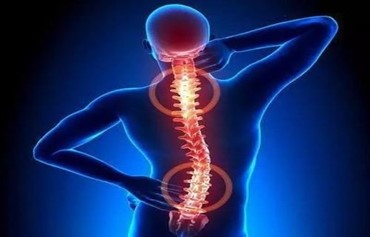What are the commonly used minimally invasive therapies for disc herniation?
Cervical and lumbar disc herniation is a common disease in middle-aged and elderly people, showing a trend of younger in recent years, and clinical recognition has been more than 70 years of history. Most patients do not need surgery, but a small percentage do need surgery to be effective. With the development of minimally invasive concepts and techniques, minimally invasive methods are emerging. The essence of minimally invasive surgery is that it should be similar to traditional surgery, but can maintain the spinal structure to the maximum, and achieve a balance between decompression and reduction of damage, and therefore gradually become the main treatment for disc herniation. Minimally invasive interventional surgery is suitable for patients who have failed conservative treatment, are unwilling to operate, or have high surgical risk.

Minimally invasive intervention for cervical and lumbar disc herniation has the following advantages. The first is very safe. Due to the use of X-ray or CT localization, it is a target clearance and does not damage normal nerves or tissues. Second, the curative effect is satisfactory. Minimally invasive intervention is not surgery. If used properly, it can achieve similar results to surgery, but without any of the complications associated with surgery. The third is less trauma. The minimally invasive intervention left only a tiny needle eye It heals after a few hours. Minimally invasive interventional therapy can also be repeated several times without causing adhesion to local tissues.
Minimally invasive intervention has become the current international cervical and lumbar disc herniation One of the main treatments for the disease. Currently commonly used minimally invasive surgery are:
1.Percutaneous ozone decompression of cervical and lumbar intervertebral discs
Ozone is a strong oxidizing agent, the half-life is short, about 20-30 min, the main mechanism of its treatment of intervertebral disc is: (1) strong oxidation. Ozone can rapidly decompose proteoglycan in the nucleus pulposus, resulting in shrinkage of the nucleus pulposus. With the extension of time, the compression of the nerve root of the pulposus ceases. (2) Anti-inflammatory effect. By stimulating the release of antagonistic inflammatory response factors, it can promote the absorption of inflammatory response. (3) Analgesic effect. It produces analgesia by inhibiting the release of pain factors.

2. Percutaneous laser disc decompression
Using laser to generate heat energy, the intervertebral disc tissue vaporizes, dries and dehydrates, reduces the tension and pressure generated by the nucleus pulposus tissue on the nerve root, and relieves root symptoms. Then a small amount of ozone is injected into the target to reduce local edema and inflammation, and has analgesic effect.
3.Chemolysis of intervertebral disc
The hydrolysis of collagenase can degrade the nucleus pulposus or protrusion, relieve the stimulation and compression of nerve roots, and achieve the therapeutic purpose. This technology is mainly used for protruding and protruding LDH. According to clinical experience and related studies, some experts have recognized that the safety of collagenase chemolysis depends on the following factors: (1) correct selection of indications and contraindications; (2) Operate in strict accordance with specifications; (3) To understand the risk and preventive measures of collagenase straying into the subarachnoid space.
4. Percutaneous disc aspiration
Disc pressure is reduced by removing disc tissue, thereby weakening or eliminating the tension mechanism that causes nerve root damage. The good and good rate of randomized controlled studies in clinical reports is less than 70%, and the indications are only 10-15%. Patients requiring surgery can be suitable for this technique, but the operation blindness is large, the intraoperative bleeding is more, and the postoperative recurrence rate is high. The efficacy and reliability of chemolysis and endoscopic discectomy are not as good as that of chemolysis and endoscopic discectomy.
5. Radiofrequency discplasty
Targeted radiofrequency reduces disc volume and inactivates pain-sensing nerve endings. Bipolar radio frequency can increase the thermal coagulation area and improve safety, and is now widely used in clinic. Water-cooled RF can increase safety, but the equipment is expensive and difficult to popularize. Percutaneous lumbar radio-frequency ablation of nucleus pulposus is a process of percutaneous guided puncture in which a thin layer of plasma is generated in the intervertebral disc through bipolar radio-frequency vaporization rods to break the organic molecular bonds of the nucleus pulposus, vaporize part of the nucleus pulposus of the intervertebral disc, and then precisely heat up to about 70℃ to ensure the contraction of the spiral structure of collagen, reduce the volume of the nucleus pulposus, and achieve decompression. It can also maintain the vitality of nucleus pulposus cells and keep the original physiological activity of nucleus pulposus tissues.
The key to the efficacy of minimally invasive treatment is to select the indication, identify the problem disc, select the most suitable minimally invasive method, and enhance back muscle training to prevent recurrence.
About the author

(The opinions expressed are those of the author. Some pictures in this article are from the Internet, if there is infringement, please contact to delete)

